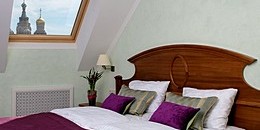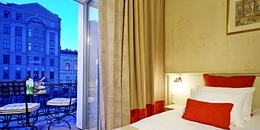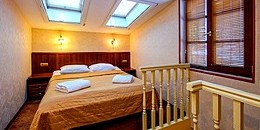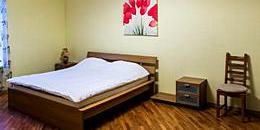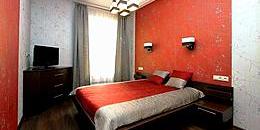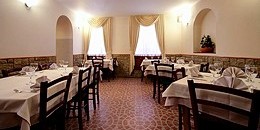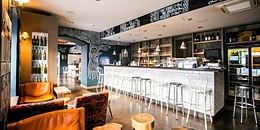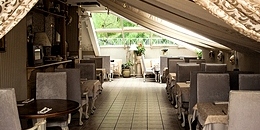Dvortsovaya Naberezhnaya (Palace Embankment)
A unique feature of the Palace Embankment: half of the two dozen houses located here are palaces. One of them is famous throughout the world - the Winter Palace of the Russian imperial family. In fact it is doubly famous not only as a former royal palace, but also as home to the Hermitage, one of the world's greatest museums of art and the largest museum in Russia. Palace Embankment is also notable for the fact that it opens with perhaps the best views of the Neva River. On the opposite bank there are several attractions almost as famous as the Hermitage - the Rostral Columns on Vasilievsky Island and the Peter and Paul Fortress.
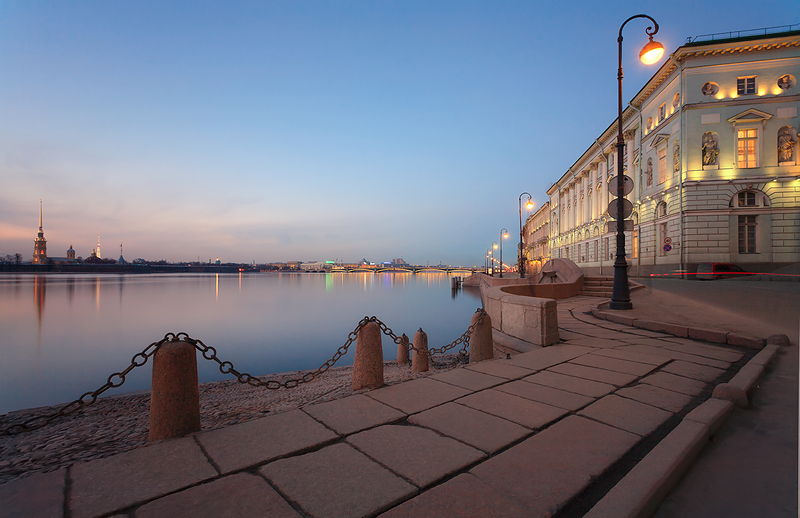
Construction of the embankment began on the left bank of the Neva in the first years of St. Petersburg opposite the Peter and Paul Fortress. It was initially called the Verkhnaya (Upper) Embankment. Only those who had a connection to the fleet or shipbuilding were allowed to live here. One of the first houses on the waterfront was that of Admiral General Fyodor Apraksin. It was originally built of wood in 1711, and then as a two-story stone palace in the Petrine Baroque style. This was the first palace of Peter I, and the house in which the founder of St. Petersburg lived and subsequently died in 1725. The walls of this small palace were later used in the construction of the Hermitage Theater.
After 1732, the Empress Anna Ivanovna told the architect Francesco Bartolomeo Rastrelli to expand and rebuild the Apraksin Mansion. Rastrelli turned it into the new Winter Palace, but this palace did not seem elegant and luxurious enough for the next ruler, Elizabeth Petrovna. She ordered Rastrelli to reconstruct the Winter Palace along grander lines. He died before the completion of the work. The current Winter Palace was not completed until 1762 under Catherine the Great, by which time its high baroque architecture and rococo decorations were rapidly going out of fashion. Its construction led to the naming of nearby Palace Square, the Palace Embankment, and Palace Bridge.
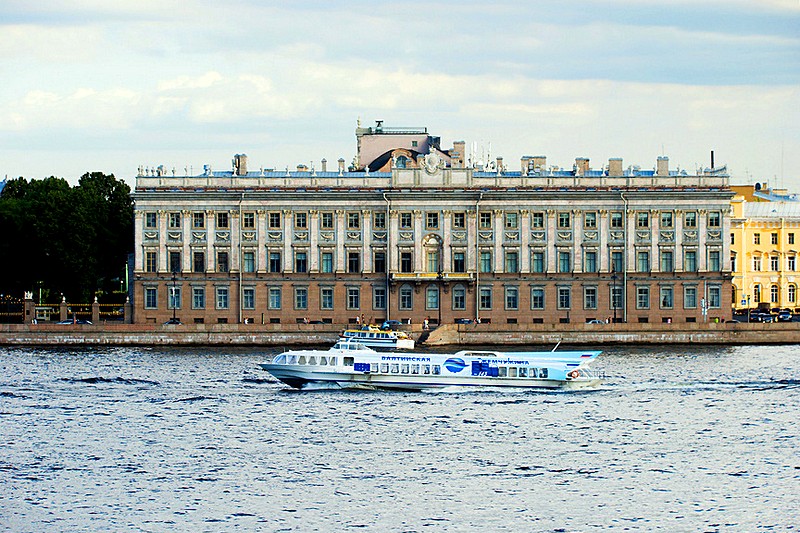
It should be noted that not only the Winter Palace but rather all the other buildings on the waterfront were originally built in the 18th century and rebuilt several times each time becoming more lush and majestic. The best architects of St. Petersburg worked on almost all of them for their first two centuries of existence: Domenico Trezzini, Giacomo Quarenghi, Carlo Rossi, Antonio Rinaldi, Jean-Baptiste Vallin de la Mothe, Alexander Briullov, Andrei Stackenschneider, and Yuri Felten. Under their leadership, the magnificent building of the Bolshoi and the Maly Hermitage, the Hermitage Theatre, the Marble Palace, Saltykov Home, Cantemir palace, Ivan Betsky Mansion (also known as the Palace of the Prince of Oldenburg) were all built. In the 19th century, the Novo-Mikhailovsky Palace, the Palace of Grand Duke Vladimir Alexandrovich, and the state wing of the Marble Palace appeared near them.
Such grandiose construction work required serious strengthening of the banks of the Neva. Already in the mid-1710's wooden walls had been constructed and filled with sand and stones. The first granite embankment was built in 1763-66, and improved a decade later. Oak piles were laid in the ground and between them granite blocks held together with iron cramps. The whole structure was then filled with lead. Thus 100 meters of shoreline were placed into the river bed. Finally, the promenade was revived with granite creating the picturesque slopes to the water. It was decided to separate the embankment from the Summer Garden. Finally came the famous fence designed by Felten.
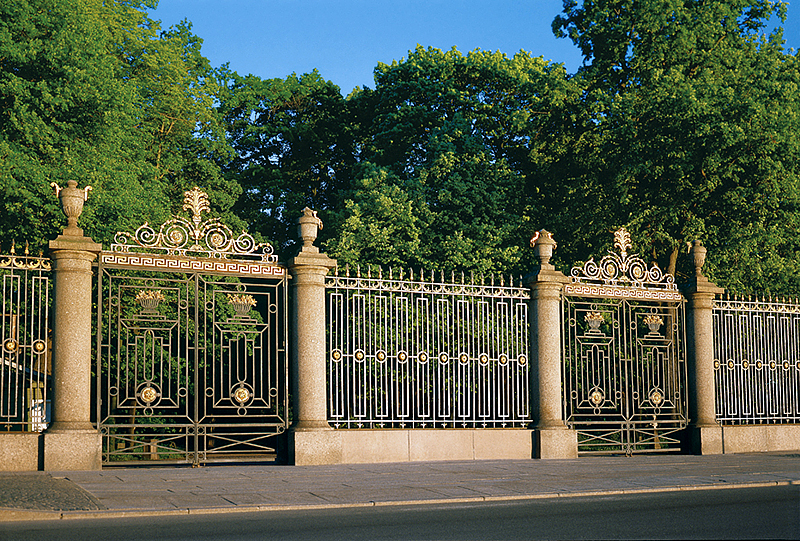
At the turn of the 20th century, Palace Bridge provided a permanent connection between the embankment and Vasilievsky Island, while Trinity Bridge connected it to the Petrograd Side. Both bridges are engineering masterpieces of the time. In 1923-1944, the embankment was named in honor of the events of January 9, 1905, when government troops opened fire on a peaceful demonstration of workers in St. Petersburg. During the Second World War, parts of the facades of buildings were severely damaged by bombs and artillery fire, but after the war extensive restoration work was carried out.
Today, many people walk on Palace Embankment. There are a lot of people strolling, admiring the spectacular views during the day and the opening of the bridges at night. From the docks in front of the Hermitage, Meteor hydrofoils set sail along the Neva to the park and palaces at Peterhof.
| Metro stations: | Gorkovskaya / Admiralteyskaya |
|---|---|
| Directions: | Exit Admiralteyskaya metro station, turn left and then right to reach Nevsky Prospekt, then left along the avenue onto Palace Square. When you reach the Neva River, trun right. From Gorkovskaya go across the river over Troitsky (Trinity) Bridge. |
| Best walking route: | All the embankment (approximately 30 minutes) |
| What's here? | The Winter Palace / Hermitage, Great Hermitage, Small Hermitage, Hermitage Theatre / Museum of the Winter Palace of Peter I, Marble Palace / Russian Museum, Novo-Mikhailovsky Palace, Palace of Grand Duke Vladimir Alexandrovich, Saltykov House, Betsky House, Zherebtsov Apartment House, Chertkov Mansion, Cantemir Palace (home of Gromov) |
| What's nearby? | Summer Garden, Fontanka River, Millionaya Ulitsa, Admiralteiskaya Embankment, Neva River, Troitsky (Trinity) Bridge, Dvortsovy (Palace) Bridge |

